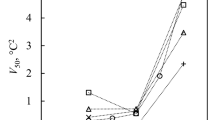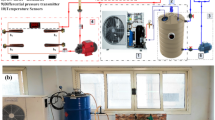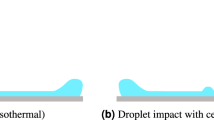Abstract
THAT the experiments of Dr. Carnelley on hot ice have excited much interest is not to be wondered at. His statement, however, that ice could be raised to a temperature of 180° without melting was so amazing that many a one could not accept it without repeating the experiments. Soon after the first short notice of Dr. Carnelley appeared in NATURE we took up the matter, but as the method used by Dr. Carnelley seemed to us to be somewhat troublesome, we made use of quite a different method. In the axis of a glass tube A B, 16 mm. in diameter, and 56 c.m. in length was fixed a thermometer t by means of two strips s s of elastic brass sheet. One of the ends of the tube was 22 mm. in diameter, while the other end had the shape of a bulb, and was drawn out in a narrow tube, a b, about 50 c.m. in length. The tube was placed in an inclined position with the end b in a glass filled with water that was kept boiling. The bottom of the glass was covered with a layer of mercury. Next the tube was heated by a Bunsen burner; a part of the air was driven out, and, after retiring the burner, the tube was partly filled with the boiling water of the glass. The water in the tube was then boiled, a still greater part of the air escaped, and by removing the burner the tube filled itself nearly entirely. The heating and cooling were repeated three or four times, and in this manner the tube could be filled with the boiling water, not a single air-bubble being left. The end b of the narrow tube was now dipped in the mercury, and by heating the tube so much of the water was driven out that the remainder filled the enlarged part A for three-fourths. The tube being now slowly cooled, the mercury rose in the tube a b, and it was very easy to seal the tube at a with the blowpipe. The water in A was now frozen, and by gently warming with the hand the ice-cylinder was loosened from the tube; by inverting the tube the molten ice was brought into the bulb B, where it was fixed by freezing. This part of the process presents some difficulty. When the heating by the hand was not stopped in time, too much of the ice was converted into water. However, by placing the bulb B in a freezing mixture of snow and salt the melting can be almost instantly arrested. The bulb of the thermometer being in this way surrounded with an ice cylinder 12 mm. in diameter, the bulb B had only to be placed in the freezing mixture to have the apparatus ready for the appliance of heat. The results of our experiments confirm those of Dr. Carnelley, inasmuch as the ice did not melt, notwithstanding the heating of the tube at A was in one instance so strong that the glass was softened and gave way to the external pressure of the air. They differ, however, as regards the temperature of the ice, which remained generally at –7°. By very strong heating the thermometer rose to 0°, but never exceeded thai point; when, not, the bulb of the thermometer, by the volatilising of the ice, was partly laid bare. As it appears by the detailed description of Dr. Carnelley's experiments in NATURE, vol. xxiii. p. 341, that the success depends for a great part on the size of the condenser, we have made another apparatus with a condenser of half a litre; the results we may obtain therewith will be related shortly.
This is a preview of subscription content, access via your institution
Access options
Subscribe to this journal
Receive 51 print issues and online access
$199.00 per year
only $3.90 per issue
Buy this article
- Purchase on SpringerLink
- Instant access to full article PDF
Prices may be subject to local taxes which are calculated during checkout
Similar content being viewed by others
Author information
Authors and Affiliations
Rights and permissions
About this article
Cite this article
DE LA RIVIERE, C., VAN HASSELT, A. Hot Ice. Nature 24, 4–5 (1881). https://doi.org/10.1038/024004b0
Issue date:
DOI: https://doi.org/10.1038/024004b0



